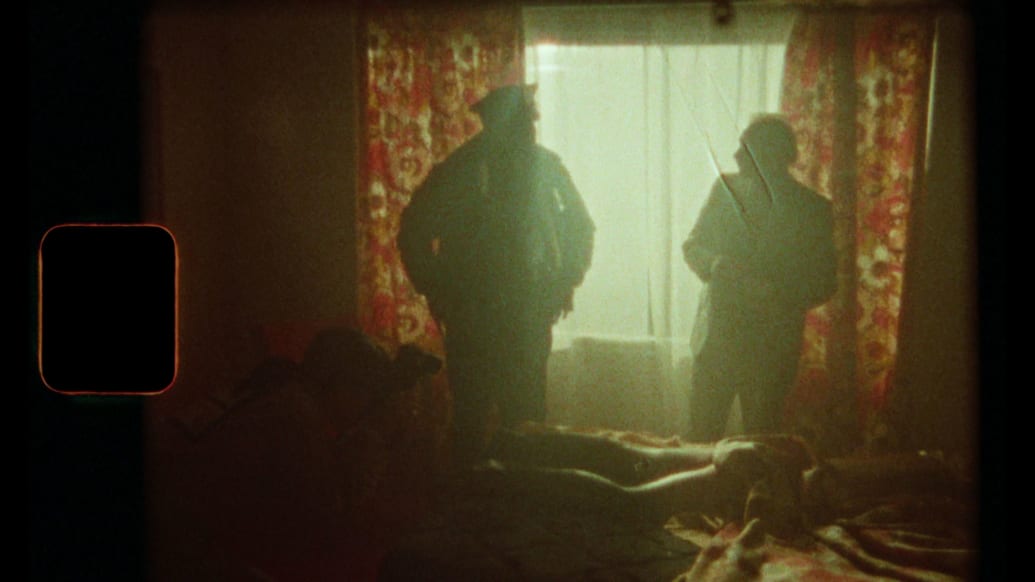Netflix
There’s no nostalgia for the gritty, grimy, colorful New York City of the late ’70s and early ’80s in Crime Scene: The Times Square Killer, director Joe Berlinger’s three-part documentary (the second in his Crime Scene series, following The Vanishing at the Cecil Hotel) about the metropolis’s ugly past. Depicting Manhattan’s epicenter as a den of sex, drugs, crime, and much, much worse, Berlinger’s latest Netflix offering (Dec. 29) contends that venturing into Times Square during that era was nothing short of a nightmare for most—and especially for women, who were viewed as easy prey by those who stalked the streets looking to indulge their basest impulses.
Among those predators, perhaps none were more lethal than Richard Cottingham, who via a series of grisly murders and sexual assaults earned himself the nickname “the Torso Killer.” Cottingham’s reign of terror on both sides of the Hudson River is the subject of Crime Scene: The Times Square Killer, whose tale begins on Dec. 2, 1979, with New York City police and fire departments responding to an inferno in room 417 of the Travel Inn Motor Hotel. Inside, officers were greeted with a shocking surprise: two thoroughly charred bodies that were missing their heads and hands. It didn’t take Sherlock Holmes to deduce that this blaze was part of the killer’s attempt to cover up his tracks, although trickier was figuring out who these victims were—eventually, one would be identified as 22-year-old prostitute Deedeh Goodarzi, while the other would forever remain a Jane Doe—and who had done this to them.
With almost no physical evidence of value, cops had to rely on the budding field of criminal profiling to come up with ideas about their suspect, whom homicide commander Vernon Geberth labelled a “psychopathic sexual sadist” because of the pleasure the individual had apparently gotten from torturing, raping and mutilating these women. Five months later on May 15, 1980, the fiend struck again, this time at the Hotel Seville near Madison Avenue and 29th Street, setting fire to a room that contained the assaulted and mutilated body of another sex worker: Jean Reyner, who’d been fatally strangled. If the maniac’s modus operandi was clear, his name and whereabouts proved difficult to ascertain, and it wasn’t long before his trail began to grow cold.
As with The Vanishing at the Cecil Hotel, Berlinger pairs solid talking-head interviews and archival material with unnecessary dramatic recreations and awkward narrated readings of authentic statements and testimony. By modern true-crime standards, Crime Scene: The Times Square Killer is a mixed aesthetic bag, prizing dutiful function over enlivening artistry. Better, at least initially, is its historical contextualization of these crimes, which took place in an early-’80s NYC brimming with street walkers, pimps, porno shops, and police officers helpless to do much about any of it—thus causing them, in many instances, to fall back on arresting prostitutes rather than endeavoring to combat the underlying forces that exploited them. Berlinger ably conveys Times Square’s function as a veritable playground of deviant illicit thrills, with sex as the prime commodity and money as the engine for all manner of bad behavior.
The relationship between sex work, narcotics, organized crime, drugs, and misogynistic horrors is plain for all to see in Crime Scene: The Times Square Killer. Author Melinda Chateauvert discusses moving away from “shameful” terms like “prostitute,” and blames offenses against sex workers on the profession’s illegality. Berlinger’s docuseries, however, suggests that these various elements are all inevitable bedfellows, and that Cottingham’s killing spree went on for so long less because of pervasive negative attitudes toward sex workers—from police or the public at large—than because of more basic systemic issues: a lack of interstate communication between police, rudimentary criminal databases, and an absence of DNA technology. To be sure, Cottingham deliberately terrorized and killed prostitutes because they were marginalized targets who wouldn’t be missed by most. Yet the underlying key to his success at evading capture was an antiquated investigative machine ill-equipped to nab such a madman.
A break in the case came from an unlikely source: Bergen County, New Jersey, where one murdered woman was found at the Quality Inn Motel, and another was discovered at a nearby apartment complex. When an additional would-be victim escaped the clutches of an assailant at the Quality Inn, police finally had their man: Cottingham, a Lodi, New Jersey, resident who worked as a computer operator at Blue Cross Blue Shield right near Times Square. Though he proclaimed his innocence, the evidence found in his home’s “trophy room” dispelled any doubts about his guilt.
In Crime Scene: The Times Square Killer, Cottingham’s coworker Dominick Volpe provides numerous anecdotes about Cottingham voicing his perverse tastes to anyone who would listen. In the process, he provides a window into the cold, sociopathic arrogance and entitlement that drove Cottingham to commit his atrocities, which also included numerous rapes and—according to Cottingham himself—as many as 105 total slayings over the course of his homicidal career.

Netflix
In a recent video interview with journalist Nadia Fezzani, the 75-year-old Cottingham (looking like the most evil Santa Claus ever) explains, “It was a game to me. It was mainly psychological. I was able to get almost any woman to do whatever I wanted them to do, psychologically. Or through the threat, or the implied threat, of being hurt, of being hurt sometimes. It’s God-like, almost. You’re in complete control of somebody’s destiny.”
Whether he was as prolific as he claims, Cottingham was a monster who took advantage of Times Square’s anything-goes atmosphere to hunt, maul and desecrate to his heart’s content, and he rightfully earned every one of the 200-plus years he received behind bars (via multiple trials). Crime Scene: The Times Square Killer occasionally pads its runtime with sociological detours that, however relevant, could have been handled in swifter fashion; as with many other likeminded endeavors, the series comes across as an episode too long. Nonetheless, with engrossing precision, it casts Cottingham’s tale as a case study in both sociopathic cruelty, and the ways in which a misogynistic culture allowed it to flourish.

